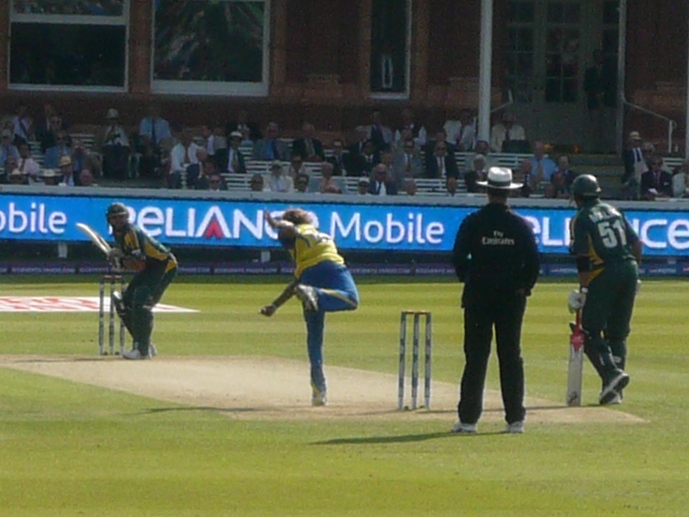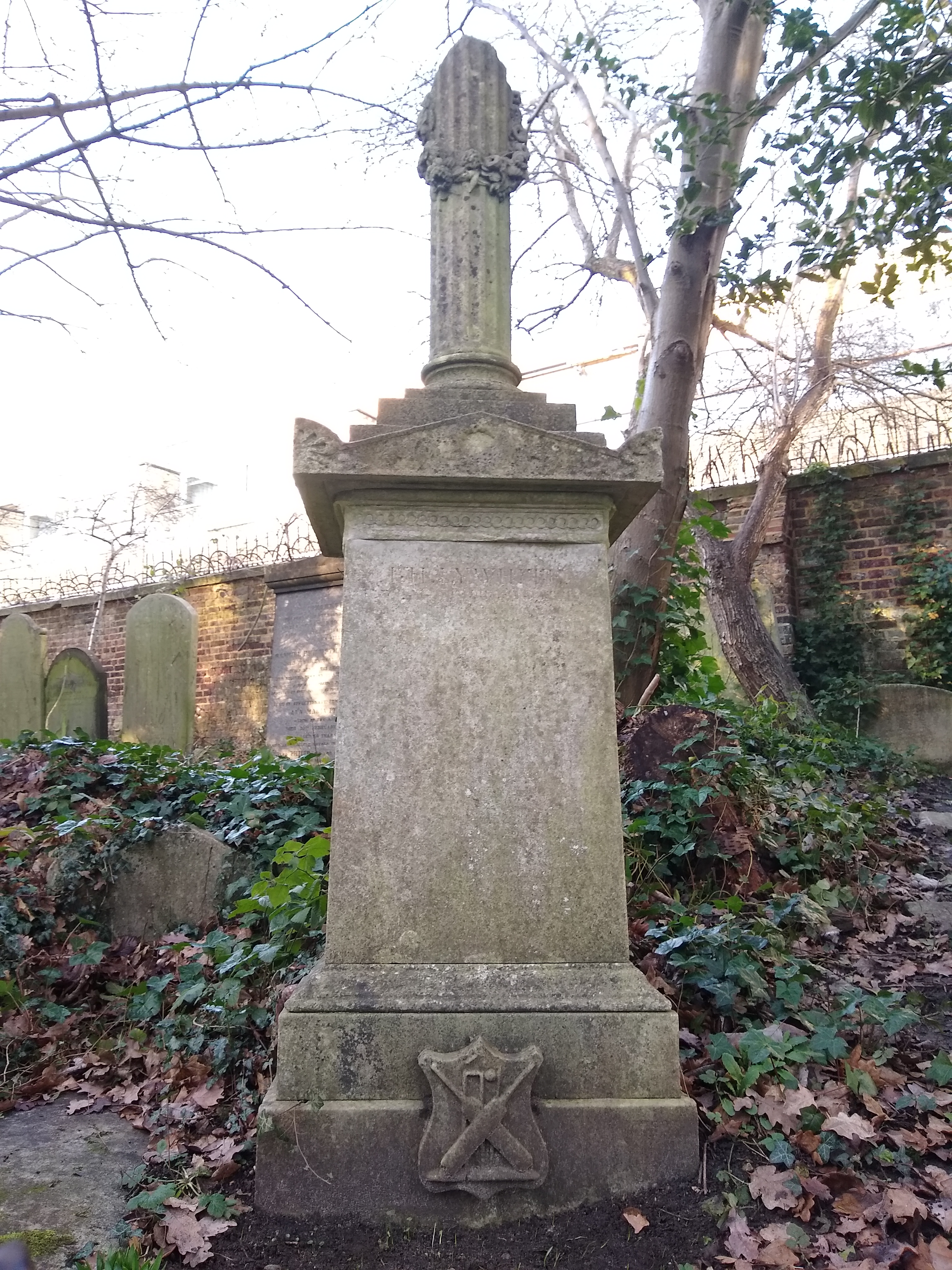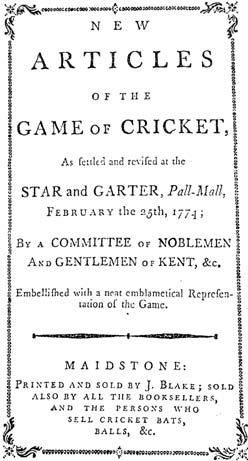|
Roundarm
In cricket, roundarm bowling is a bowling style that was introduced in the first quarter of the 19th century and largely superseded underarm bowling by the 1830s. Using a roundarm action, the bowlers extend their arm about 90 degrees from their body at the point where they release the ball. Roundarm fell into decline after 1864 when the current style of overarm bowling was legalised, although W. G. Grace continued to use it to the end of his career. Origin The spread of roundarm in the 1820s was a natural reaction to the growing predominance of batsmen over the age-old underarm style of bowling. Its adherents argued that the legalisation of roundarm was essential to restore the balance between batting and bowling. However, high-scoring matches were still comparatively rare owing to vagaries in pitch conditions. The idea of roundarm is sometimes attributed to Christiana Willes, sister of Kent cricketer John Willes. The story goes that when bowling to her brother in the garden a ... [...More Info...] [...Related Items...] OR: [Wikipedia] [Google] [Baidu] |
Jem Broadbridge
James "Jem" Broadbridge (1795–1843) was an English professional cricketer who is widely considered the outstanding all-rounder in England during the 1820s. He played mainly for Sussex teams and made 102 known appearances in first-class cricket from 1814 to 1840,Jem Broadbridge CricketArchive. Retrieved 28 June 2009. being best remembered for his part in the introduction of . He played for the Players in the series and the |
William Lillywhite
Frederick William Lillywhite (13 June 1792 – 21 August 1854) was an English first-class cricketer during the game's roundarm era. One of the main protagonists in the legalisation of roundarm, he was one of the most successful bowlers of his era. His status is borne out by his nickname: ''The Nonpareil''. Lillywhite's known first-class career spanned the 1825 to 1853 seasons, and he played for Sussex County Cricket Club as well as the Marylebone Cricket Club, and also represented Surrey, Hampshire, and Middlesex in the period before the formation of the current county clubs. Detailed bowling figures for many of his matches are not known: he took 1576 wickets in 237 matches, and took 155 five-wicket hauls and 55 ten-wicket hauls. He was an original member of William Clarke's All-England Eleven. Part of a cricketing dynasty, he was the father of John Lillywhite and Fred Lillywhite, and uncle of James Lillywhite. Career Early days Lillywhite was born on 13 June 1792 in Wes ... [...More Info...] [...Related Items...] OR: [Wikipedia] [Google] [Baidu] |
Underarm Bowling
Underarm bowling is a style of bowling in cricket. The style is as old as the sport itself. Until the introduction of the roundarm style in the first half of the 19th century, bowling was performed in the same way as in the sport of bowls, with the ball being delivered with the hand below the waist. Bowls may well be an older game than cricket and it is possible that it provided a template for delivering a ball with a degree of accuracy. History For centuries, bowling in cricket was performed exactly as in the sport of bowls because the ball was rolled or skimmed along the ground. The bowlers may have used variations in pace but the basic action was essentially the same. There are surviving illustrations from the first half of the eighteenth century which depict the bowler with one knee bent forward and his bowling hand close to the ground, while the ball trundles (if slow) or skims (if quick) towards a batsman armed with a bat shaped something like a large hockey stick and g ... [...More Info...] [...Related Items...] OR: [Wikipedia] [Google] [Baidu] |
Roundarm Trial Matches
The roundarm trial matches were a series of cricket matches between Sussex and All-England during the 1827 English cricket season. Their purpose was to help the MCC, as the game's lawgivers, to decide if roundarm bowling should be legalised or if the only legitimate style of bowling should be underarm, which had been in use since time immemorial. Conditions of play The matches were also known as the "Experimental Matches". The conditions set for the matches allowed William Lillywhite and Jem Broadbridge of Sussex to bowl roundarm, while the All-England bowlers had to bowl underarm. Summary of series Sussex won the first match at Sheffield against an all-professional All-England team by 7 wickets and the second at Lord's by 3 wickets. After the second match, the following declaration was made by some of the All-England players: "We, the undersigned, do agree that we will not play the third match between All-England and Sussex, which is intended to be played at Brighton in July o ... [...More Info...] [...Related Items...] OR: [Wikipedia] [Google] [Baidu] |
Overarm Bowling
In cricket, overarm bowling refers to a delivery in which the bowler's hand is above shoulder height. When cricket originated all bowlers delivered the ball underarm, where the bowler's hand is below waist height. However, so the story goes, John Willes became the first bowler to use a "round-arm" technique after practising with his sister Christine Willes, who had used the technique, as she was unable to bowl underarm due to her wide and huge skirt impeding her delivery of the ball.http://www.cricketweb.net/resources/history/index.php John Willes and his sister invent overarm bowling{{fv, date=July 2022 A roundarm delivery is where the hand is between shoulder height and waist height; After roundarm was legalised in 1835 with the bowler allowed to deliver the ball at shoulder height, it was not long before some bowlers began to raise the hand above the shoulder. The Laws of Cricket at that time directed that such a delivery be called a no-ball. In 1845, the law was strengthen ... [...More Info...] [...Related Items...] OR: [Wikipedia] [Google] [Baidu] |
Christiana Willes
Christiana Willes (1786–1873), also known by her married name Christiana Hodges, was an early nineteenth century cricketer and the sister of John Willes (cricketer), John Willes. She has sometimes been attributed as the founder of roundarm bowling but it is known that the style was originated by Tom Walker (cricketer), Tom Walker. Many cricket sources name her as Christina rather than Christiana, but John Major and the Oxford Dictionary of National Biography are adamant that Christiana was the correct spelling of her name. Biography The earliest record of Christiana Willes is her baptism, on 20 February 1786 at Headcorn, Kent, as daughter of Sarah Snelling and William Willes, landowners, who in 1794 had inherited the manor of Tonford near Canterbury, Kent, Canterbury. She married on 24 September 1810 Lieutenant Richard Thomas Hodges RN, is thought to have lived in Maidstone for a time, but to have moved elsewhere. Her son, Edward Hodges, was born at her brother John's house in ... [...More Info...] [...Related Items...] OR: [Wikipedia] [Google] [Baidu] |
Laws Of Cricket
The ''Laws of Cricket'' is a code which specifies the rules of the game of cricket worldwide. The earliest known code was drafted in 1744 and, since 1788, it has been owned and maintained by its custodian, the Marylebone Cricket Club (MCC) in London. There are currently 42 Laws (always written with a capital "L") which outline all aspects of how the game is to be played. MCC has re-coded the Laws six times, the seventh and latest code being released in October 2017. The 2nd edition of the 2017 Code came into force on 1 April 2019. The first six codes prior to 2017 were all subject to interim revisions and so exist in more than one version. MCC is a private club which was formerly cricket's official governing body, a role now fulfilled by the International Cricket Council (ICC). MCC retains copyright in the Laws and only the MCC may change the Laws, although usually this is only done after close consultation with the ICC and other interested parties such as the Association of Crick ... [...More Info...] [...Related Items...] OR: [Wikipedia] [Google] [Baidu] |
John Willes (cricketer)
John Willes (1778 – 5 August 1852) was an English cricketer who, although he played in only five first-class cricket matches, had a significant impact on the game's history and development. Willes played for Kent county cricket teams and was a fast bowler who had a "pivotal" role in the development of roundarm bowling.Carlaw D (2020) ''Kent County Cricketers A to Z. Part One: 1806–1914'' (revised edition), pp. 577–579.Available onlineat the Association of Cricket Statisticians and Historians. Retrieved 2020-12-21.) Willes was born at Headcorn in Kent in 1778 and christened at Hollingbourne on 17 August. He was the son of John and Sarah Willes and became a prominent landowner in Kent and Sussex. He lived for much of his life at Sutton Valence.John Willes |
No-ball
In cricket, a no-ball is a type of illegal delivery to a batter (the other type being a wide). It is also a type of extra, being the run awarded to the batting team as a consequence of the illegal delivery. For most cricket games, especially amateur, the definition of all forms of no-ball is from the MCC ''Laws of Cricket.'' The delivery of a no-ball results in one run – two under some regulations – to be added to the batting team's overall score, and an additional ball must be bowled. In addition, the number of ways in which the batter can be given out is reduced to three. In shorter competition cricket, a batter receives a free hit on the ball after any kind of no-ball (see below); this means the batter can freely hit that one ball with no danger of being out in most ways. No-balls due to overstepping the crease are common, especially in short form cricket, and fast bowlers tend to bowl them more often than spin bowlers. It is also a no-ball when the bowler's back foot ... [...More Info...] [...Related Items...] OR: [Wikipedia] [Google] [Baidu] |
No-ball
In cricket, a no-ball is a type of illegal delivery to a batter (the other type being a wide). It is also a type of extra, being the run awarded to the batting team as a consequence of the illegal delivery. For most cricket games, especially amateur, the definition of all forms of no-ball is from the MCC ''Laws of Cricket.'' The delivery of a no-ball results in one run – two under some regulations – to be added to the batting team's overall score, and an additional ball must be bowled. In addition, the number of ways in which the batter can be given out is reduced to three. In shorter competition cricket, a batter receives a free hit on the ball after any kind of no-ball (see below); this means the batter can freely hit that one ball with no danger of being out in most ways. No-balls due to overstepping the crease are common, especially in short form cricket, and fast bowlers tend to bowl them more often than spin bowlers. It is also a no-ball when the bowler's back foot ... [...More Info...] [...Related Items...] OR: [Wikipedia] [Google] [Baidu] |
Alfred Mynn
Alfred Mynn (19 January 1807 – 1 November 1861) was an English first-class cricketer during the game's "Roundarm Era". He was a genuine all-rounder, being both an attacking right-handed batsman and a formidable right arm fast bowler. Cricket writer John Woodcock ranked him as the fourth greatest cricketer of all time. Simon Wilde wrote of him: "The speed at which Mynn bowled... and his life-size personality captured the imagination of the public in a way no cricketer had before." Mynn was born at Twisden, near Goudhurst in Kent, the fourth son of a gentleman farmer. He was a hop farmer, and was married to Sarah, in 1828. They had many children, five of his daughters survived to adulthood and Sarah Mynn outlived her husband by twenty years. He was a very large man by any standard, bearing comparison with W. G. Grace. He was well over six feet tall and weighed more than 21 stones (294 lbs). He was known as "the Lion of Kent" and it was for Kent that most of his greatest fe ... [...More Info...] [...Related Items...] OR: [Wikipedia] [Google] [Baidu] |
Sussex County Cricket Teams
Sussex county cricket teams have been traced back to the early 18th century but the county's involvement in cricket dates from much earlier times as it is widely believed, jointly with Kent and Surrey, to be the sport's birthplace. The most widely accepted theory about the origin of cricket is that it first developed in early medieval times, as a children's game, in the geographical areas of the North Downs, the South Downs and the Weald.Underdown, p. 4. 17th century The first definite mention of cricket in Sussex relates to ecclesiastical court records in 1611 which state that two parishioners of Sidlesham in West Sussex failed to attend church on Easter Sunday because they were playing cricket. They were fined 12 pence each and made to do penance. A number of such cases were heard in Sussex during the 17th century and there were two instances of players dying, both in Sussex, after being struck on the head during a match. Despite these problems, cricket became established in S ... [...More Info...] [...Related Items...] OR: [Wikipedia] [Google] [Baidu] |





